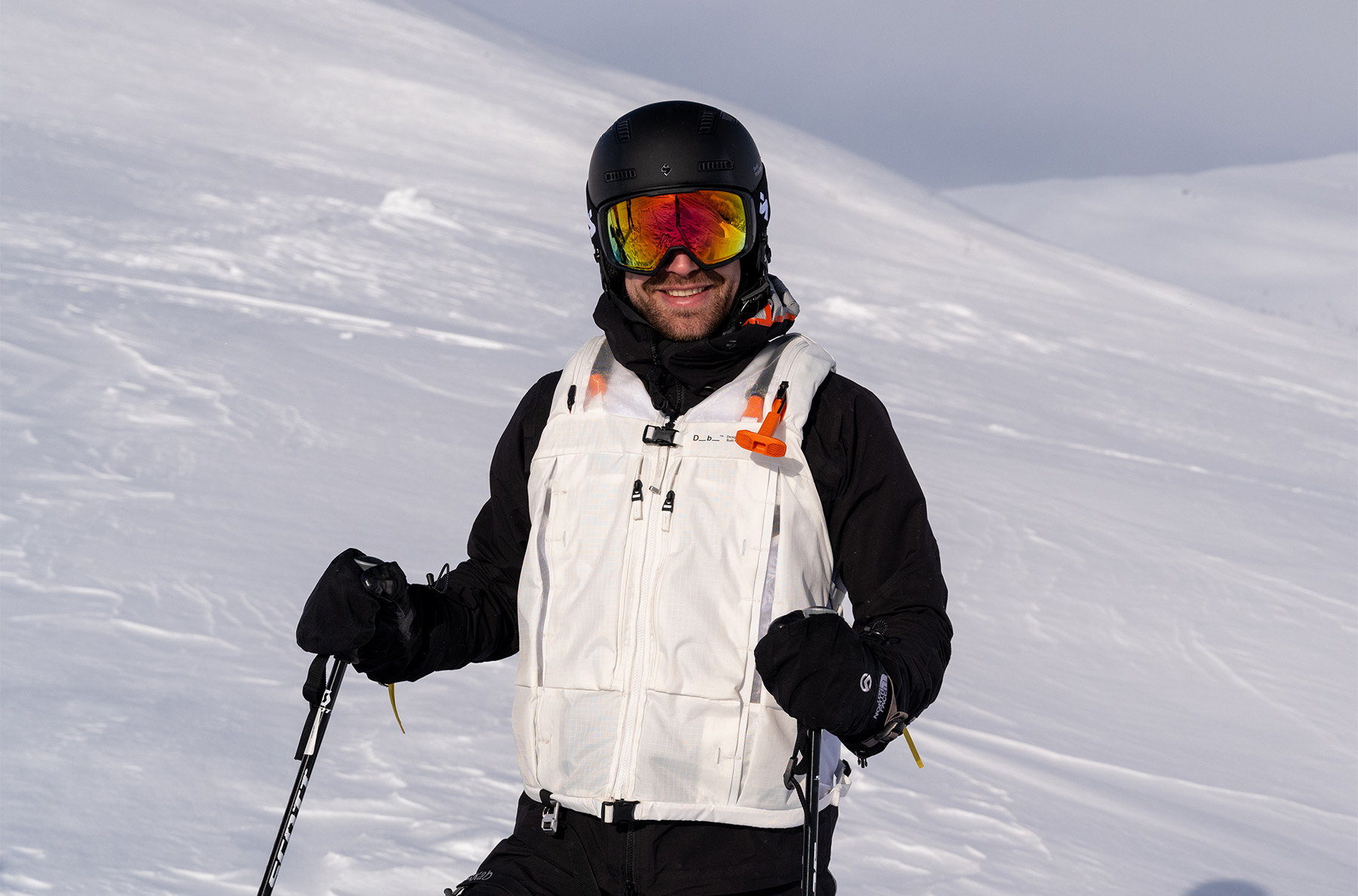
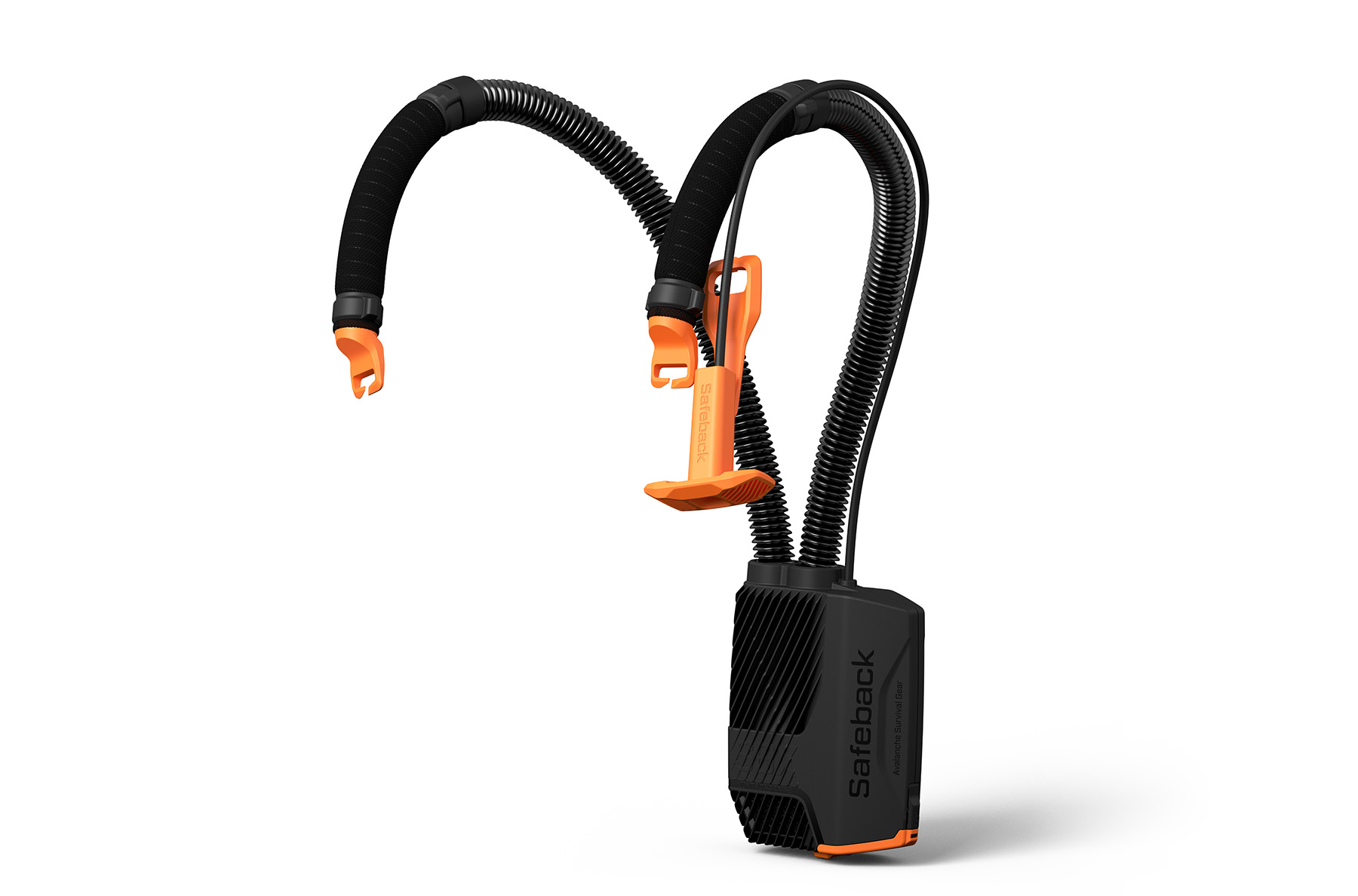
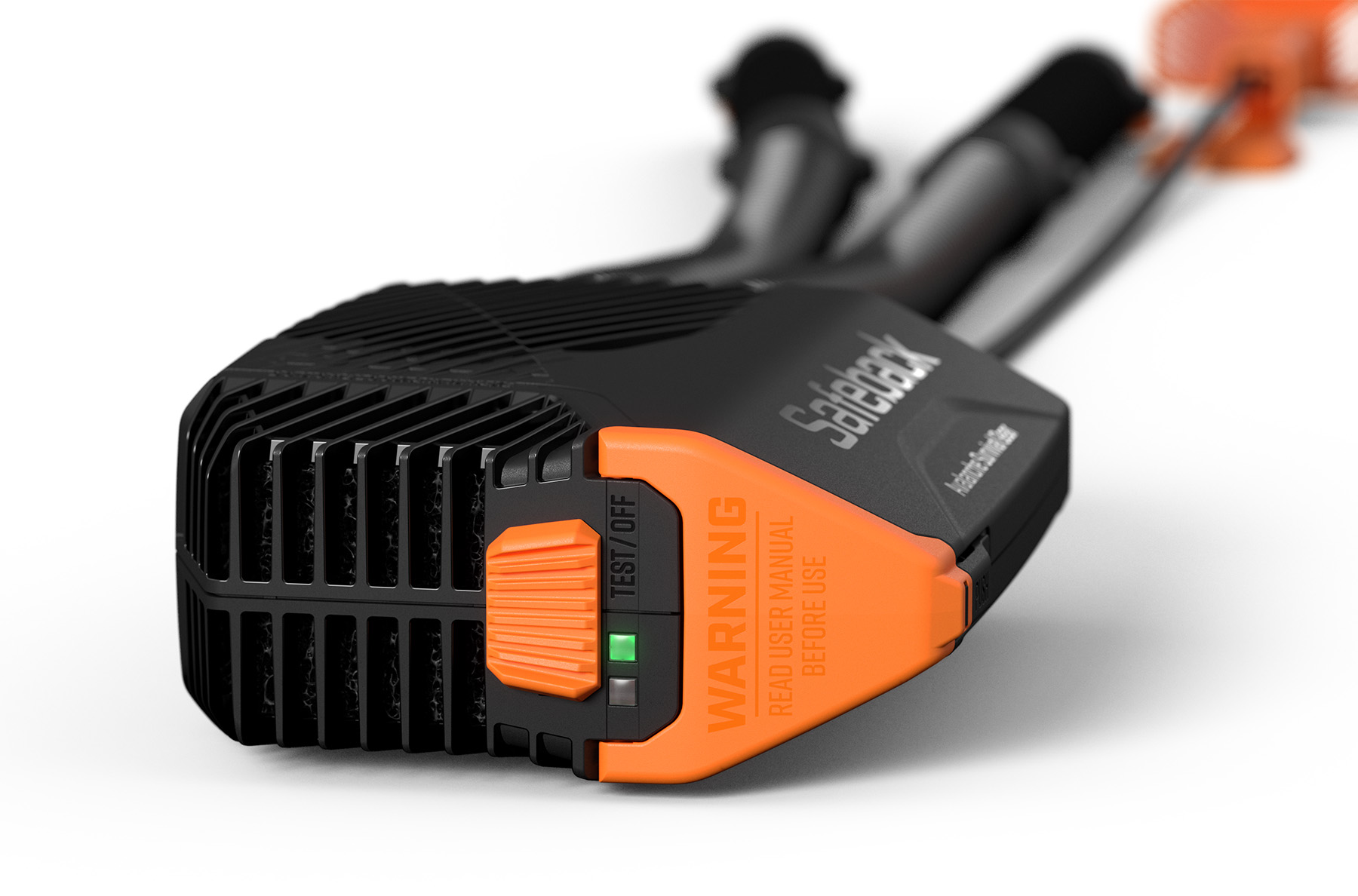


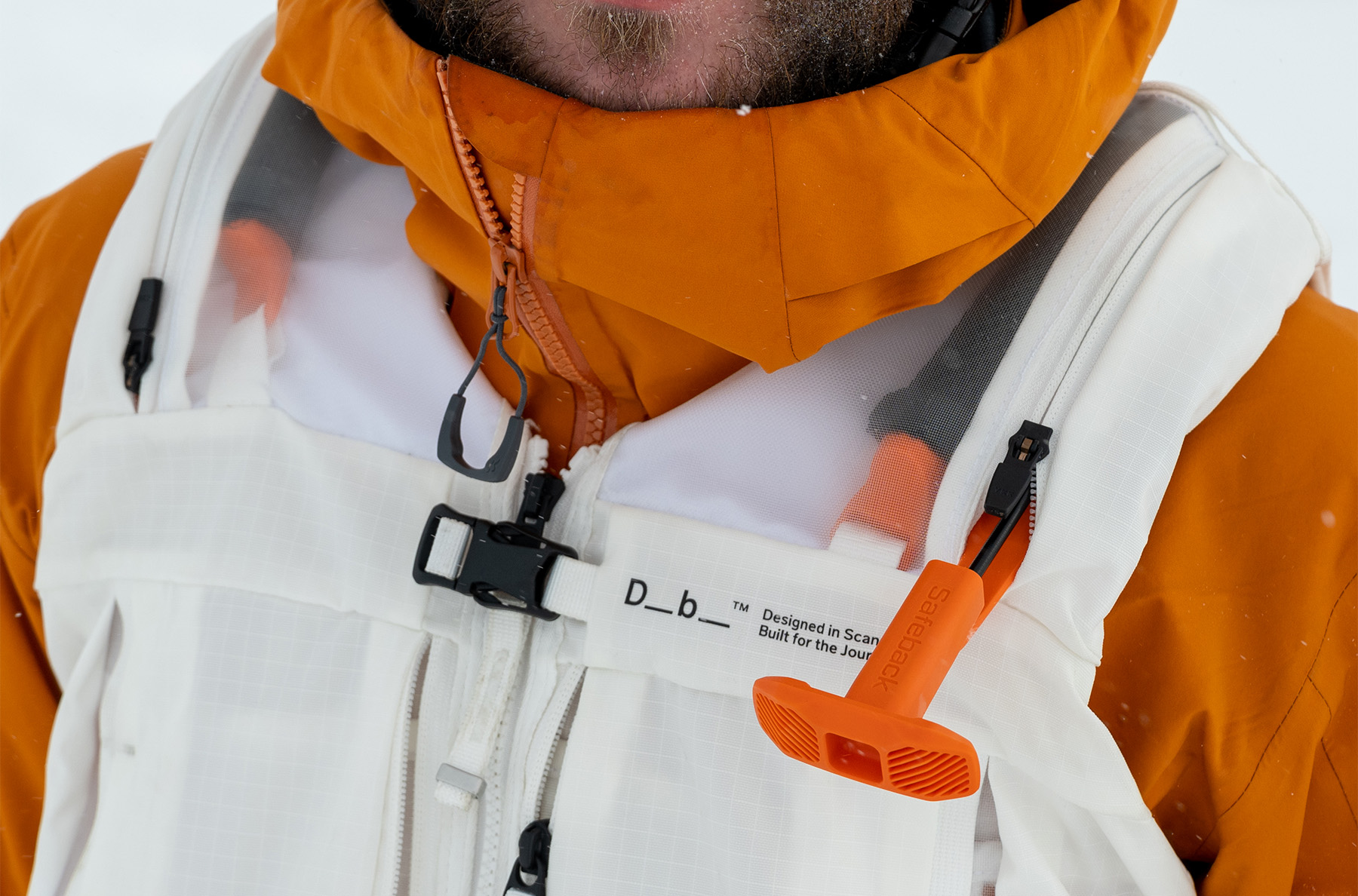
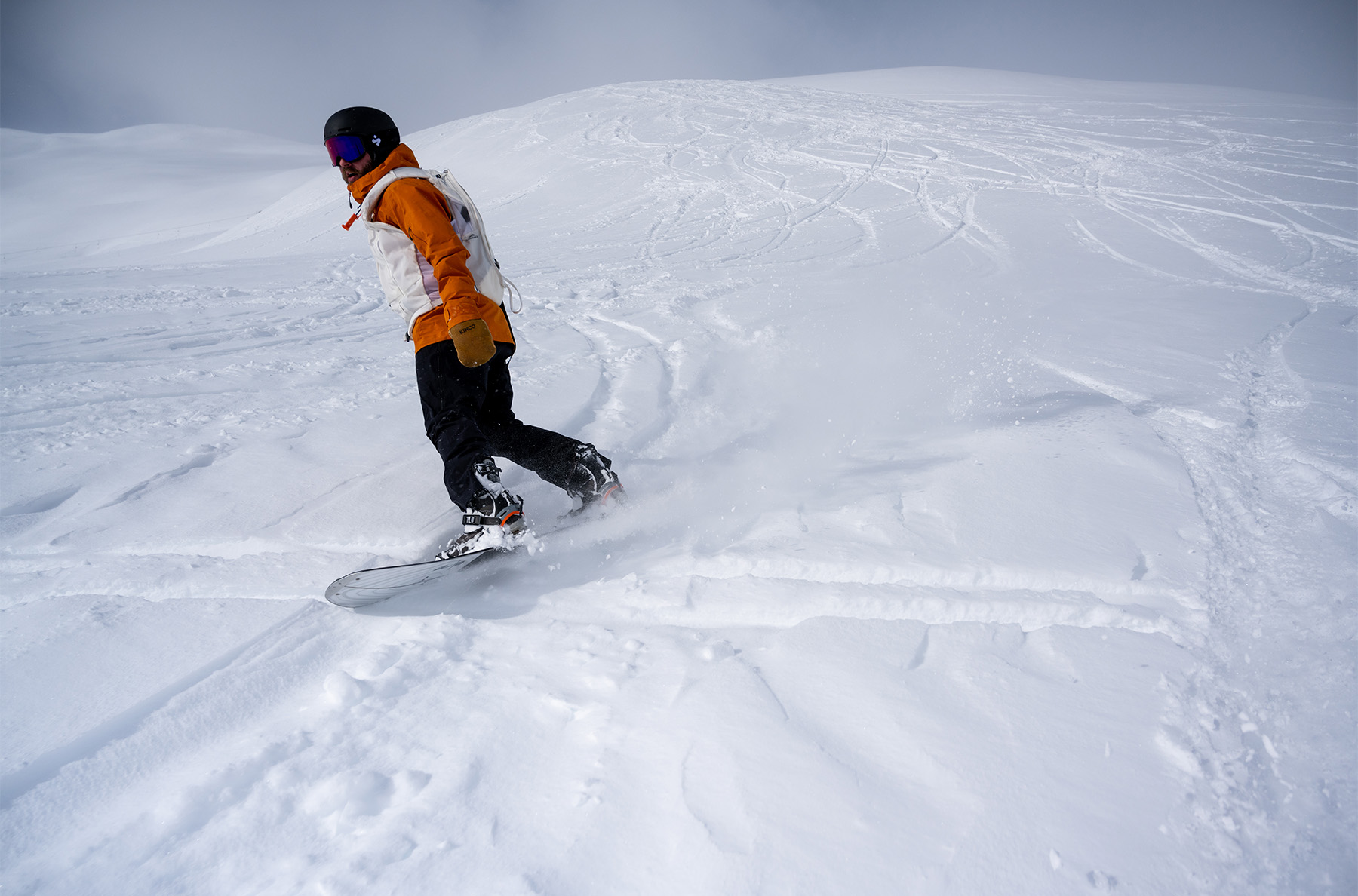
If you spend any time — inbounds or in the backcountry — skiing or riding in avalanche terrain or near tree wells, then you need to listen to this episode. Because we’re talking about a new system designed to increase your chances of survival if buried in an avalanche or tree well: the Safeback SBX. Our guest is Tor Berge, the CEO of the Norwegian company, Safeback, and Tor and I have a wide ranging conversation about avy gear in general, while also diving deep into the development process of their SBX system and exactly how it works. There’s lots of good food for thought in this one.
TOPICS & TIMES:
- What sparked the idea? (2:49)
- Buying More Time while Buried (6:40)
- Defining the Problem: Trauma & Asphyxia (9:52)
- Activating the System (15:41)
- Integration: Backpacks, Vests, & Airbags (17:33)
- Difficulty of Development (28:55)
- Which snow type is best for O2 Circulation? (34:45)
- JE’s Experience in Argentina (38:17)
- Surprising Findings in Development? (41:31)
- Certification Process (43:38)
- Tree Wells (49:19)
- Price (55:16)
- Crashes & Close Calls (57:19)
- What We’re Celebrating (1:02:54)
RELATED LINKS
CHECK OUT OUR OTHER PODCASTS:
- CRAFTED
- Blister Podcast
- Bikes & Big Ideas
- Off the Couch
- Happy Hour (for Blister Members)




So….it’s a battery-powered Avalung?
Sort of but not really. The Avalung has a mouthpiece, so it doesn’t depend at all of the air-permeability of the snow, assuming you actually have or get the mouthpiece inserted when you get avalanched (big “if”).
Jonathan was absolutely right to home in on the case of a mouthful of snow right off the bat, because I suspect that points directly to some of the unanswered (IMO) questions about this design.
“No air pocket” (what Tor described as their baseline/assumed use case) is not the same thing as an airway full of snow, which happens fairly often among people caught in an avalanche. No air pocket just means there’s no cavity in front of your mouth/nose.
Taking the theme a bit further, if you read enough avalanche fatality reports, you will see references to whether an ice mask had formed in front of the victim’s face as a result of their breathing heating the snow, which then refreezes to form a sheet of ice. Once that happens the snow is no longer air-permeable, and something like the Safeback can’t keep you alive. It seems to me that the rate at which that happens will depend on the temperature and water content (especially “free” water as in slush) of the snowpack, the victim’s breathing rate, and probably a host of other variables.
Avalanches themselves greatly compact the snow and thereby make it less air-permeable, as anybody who’s tried digging objects out of “normal” snow versus avy debris can attest. What I didn’t hear from Tor is an adequate explanation of whether/how that’s been taken into account, particularly for wet slides. I’m not saying it hasn’t been, just that I’d want to see it addressed explicitly before spending money on or dedicating pack space to something like this.
One last remark: IIRC the 25%/75% ratio for trauma vs asphyxiation fatalities that Tor cited is largely based on European data, which in turn largely reflects victims who were riding in the alpine, above the tree line.
One last remark: His description of the ranges of snow they tested at around 33:30 confused me.
He describes two test cases as “wet snow at 600 kilos per square meter” and “dry snow at 400-500 kilos per square meter”. I’m going to give him the benefit of the doubt and assume that he meant to say cubic meters instead of square meters, in which case those correspond to 60% and 40-50% snow water content respectively. Those seem like really odd values to me. Maybe he meant to say 40-50 kg/m^3 for the light powder case?
I looked through the design of their medical efficacy study (https://ichgcp.net/amp/clinical-trials-registry/NCT05779540, found by chasing links from their website) and I don’t see anything about snow densities and particularly about using compacted post-avalanche debris.
Anyway, thanks for bringing this, Blister. It will be interesting to follow and see how the questions end up being resolved.
Hi Patrick – thank you very much for your engagement with this episode, and for bringing up some points for further clarification. We’ve taken the time as a team to go through your thoughts and hope these answers will help clear up those questions – if not, feel free to keep asking and we will answer everything you are wondering about.
Here is a quick summary of the points which seem unclear to you: 1) Frequency of blocked airways in avalanche burial 2) speed of non-permeable ice formation in front of the face in burial, 3) Airflow through warm/wet snow vs. cold/dry snow, 4) Snow conditions in the medical study conducted by Eurac Research.
1) Frequency of blocked airways in an avalanche burial
As we stated in the podcast, there is a hole in the avalanche accident dataset related to the openness of the victims’ airways, which forces us to compare outcomes and timelines from different sources – avalanche survival timelines from existing research in that field, and suffocation timelines from physiological research in that field. This is by no means a perfect science, but we are working with all of the available data we have to make reasoned judgments about the applicability of the technology to save lives.
The SBX is designed to help victims who can breathe under the snow while buried — meaning that their airways must be at least partially open during burial. Victims whose airways are fully blocked cannot benefit from the air supply provided by Safeback SBX.
Based on published research on avalanche survival, 9 out of 10 avalanche burial victims survive to 15 minutes (Falk, Brugger, & Adler-Kastner, 1994). In situations where the human body no longer can breathe in any additional oxygen, suffocation will take place over the course of 5-12 minutes. With that knowledge, our interpretation of this data is that roughly 10% of buried victims have no ability to breathe under the snow. These are the individuals who die inside of the first 10-15 minutes.
In short: the system is designed to help those individuals in the avalanche survival curve between 15 and 30 minutes who otherwise suffocate due to oxygen deprivation, and will also benefit those remaining individuals who managed to create an air pocket.
2) Speed of non-permeable ice formation in front of the face in burial vs. SBX Runtime
In cases where a user has no air pocket under the snow, they will have the shortest timelines, and greatest need for a system like SBX. But research has also shown that if an air pocket is around 1.5 L, that their oxygen saturation will also sink rapidly without supplemental air (Wik, et. al., 2022).
We were fortunate to observe a burial test in Norway in 2019 that tested the concept of supplementing the breathing area with fresh air: https://www.sciencedirect.com/science/article/abs/pii/S0300957222000077#!
In this study, 20 volunteers were buried twice (with and without supplemental air) – so 40 snow burials in total. The maximum time that individuals in this study were buried was 20 minutes, which would give some indication as to how much permeable ice forms in the 10-15 minute window which leads to suffocation.
During this study, we were allowed to examine this snow ourselves after the victims were recovered, and in all 40 burials, we did not find one case did we see any permeable ice forming in this timeline. The key problem physiologically that results in asphyxia over time, is that your body cannot exhale hard enough to push the “used” air into the snow so that it is not inhaled again. SBX’s job in this scenario is to simply replace the used air from the shoulders so that oxygen and CO2 levels remain as normal as possible.
Eurac’s medical trial testing involves a complete burial, face down in the snow at a maximum length of 60 minutes with SBX running. This design will not only give us indicators of exactly how long SBX can maintain air quality under snow, but also the physiological effects of extended burial, and hopefully also some clear indications of how much icing takes place in an extended burial at 60 minutes.
Lastly, the formation of the “ice lens” or “ice mask” is a real thing – as you mention reading about in your avalanche reports, but is on a time scale much greater than what SBX is trying to solve. After reading those reports ourselves, and speaking with many Avy pros and SAR teams, we have found that this is most often the case when SAR groups have to be deployed and the body is lying under snow for 3+ hours or even days. The degree of permeability of this long-term ice is unknown as there is no unified dataset to speak to it.
All we know is that in all cases that we have tested and encountered icing, those frozen sections of snow remained permeable, and air from our system could reach the breathing area in our testing.
3) Densities and properties of snow types during product testing
Good catch on the meters-cubed vs squared piece – sorry if that was a point of confusion.
Here are the extremes of the snow types we have tested in our burial simulations, with nearly every imaginable combination in between:
Air temp +5 deg. C, 600-700 kg/m^3 – wet, large-grained snow in Folgefonna, Norway
Air temp -22 deg. C, 400-500 kg/m^3 – dry, very fine-grained snow in Kirkenes, Norway
We totally agree that avalanche snow has totally different properties than fresh snow and that fresh snow is not suitable for our burial testing. That is why we did not conduct testing in fresh snow environments. Instead, we often used front loaders and other mechanical methods to break down the structures of the snow, as well as re-compact them. You can see more photos of that process in this article from our research partner at the Norwegian Armed Forces:
https://www.ffi.no/en/news/breathing-assistance-in-deadly-avalanches
To restate what was said on the podcast: our burial simulation testing has shown that there is the highest degree of airflow through warm snow. As a result, we have spec’ed the system to meet the requirements of snowpacks that provide the highest resistance: dry snow.
When your experiment is buried under a meter of snow, it’s impossible to get a full understanding of the mechanics under the surface – just the results from the O2 and CO2 meters we had distributed in the snowpack. As such, our understanding of why this is happening is still theoretical in nature and based on our best understanding of snow science and conversations with other snow experts. Wet snow is “heavier” in water content by volume, yes, but often in large grains which hold large openings between one another. Lighter, dryer avalanche debris may have “more” air by volume, but the small grains hold tighter bonds with one another and smaller spaces for air to permeate.
Thank you for taking the time to reply so thoroughly, and also for clearly acknowledging areas of uncertainty!
I particularly appreciate your answer to the density question, as it made clear that the densities are so high precisely because you’ve tested in compacted (as opposed to new-fallen) snow. I think that’s the right approach.
I’m looking forward to seeing how this all pans out.
To be clear, I’m saying that I’m not convinced by Tor’s explanation of how icing is a positive for the system. That goes against a lot of previous results (particular by the Avalung’s developers). I’m sure it was positive for the conditions they tested, but they don’t provide enough details as to what those were.
We’ve summarized our answers above in separate threads so that we can keep different topics from one another.
Please let us know if you have any more questions about any of these points or anything else about Safeback or SBX!
Tor and the Safeback Team
Restating what I said above, I think that your answers here are commendably detailed and convincing, and look forward to seeing this technology in the field.
4) Snow conditions in the medical study conducted by Eurac Research
Compared to the variables which they detail in the study description you linked to, the snow density was not something they could control for to a point where they could list it in this trial.
But thankfully, Eurac is a team of avalanche experts with just as critical an eye as anyone, and so they brought in the Swiss SLF (https://www.slf.ch/en/index.html) to consult on the snow properties in order to find representative snow conditions to avalanche debris. They mention them directly in their blog: https://www.eurac.edu/de/magazine/nichts-fur-feiglinge (open with Chrome or another browser with translation)
There they also show the measurement process in the last image before the videos of the burial. While they do not mention any specific densities yet, we are sure that it will be a point mentioned clearly in their findings.
Are there any survivors who survived after being buried in an avalanche for a long time using this device at present? Are you considering merging the avalanche airbag with this load?